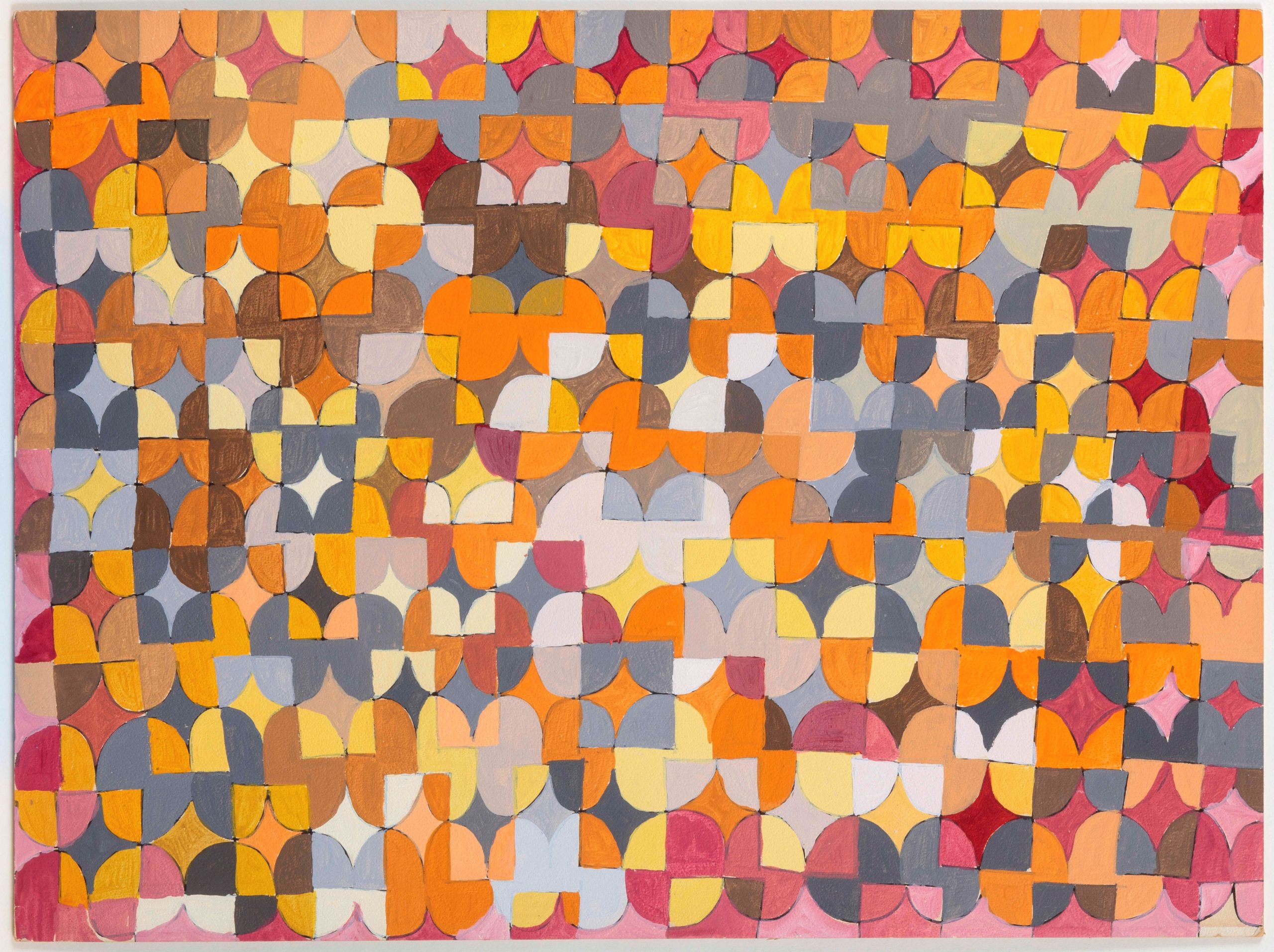
07 Jul Unlisted: Underappreciated Women Artists from the Permanent Collection
On view in the Museum May 29–October 2, 2022
Ongoing online at DerfnerOnline.org
This exhibition highlights seventeen mid- to late twentieth-century women artists selected from the permanent collection who worked in modernist styles, yet are not often exhibited today despite their significant skills, careers and accomplishments. The exhibition is on view in the Museum through October 2, 2022, and may be experienced virtually at www.derfneronline.org.
“Listed” is used to describe artists included in standard art reference books. The term is often used by third-tier auction houses and online auction websites to indicate that an artist is of a certain status and to bolster their legitimacy. “Unlisted,” the title of this exhibition, exposes the irony of the term and the arbitrariness of the art world. The impact is particularly significant for women who, in addition to attempting to establish reputations as professional artists, had to compete in a sexist, male-dominated art world. In some cases, forced to choose between traditional gender roles and a career, women artists gave up their artistic practice, further driving their names into obscurity.
Five of the artists in this exhibition are represented with prints that reflect their diverse approaches to the medium. These include a stark black-and-white etching by Lily Harmon (b. New Haven, Connecticut, 1913–d. New York, New York, 1998); a fragile, textured collatype by Gertrude Perrin (b. New York, New York, 1908–d. Boynton Beach, Florida, 1998); delicate images of water and sky by Shirley Roman (b. Brooklyn, New York, 1919–d. Madison, Wisconsin, 2010); and avant-garde works by Ruth Cyril (b. New York, New York, 1920–d. ?) and Terry Haass (b. Ceský Tešín, Czechoslovakia, now Czechia, 1923–d. Paris, France, 2016).
Roman primarily depicted seascapes, creating rich textures, patterns and colors in her etchings. Three prints in this exhibition display her technical skill at rendering color gradations and pattern, as evinced, for example, in the fine lines and delicate grays of Maelstrom (ca. early 1970s). Roman was a member of Graphic Eye Gallery, one of several artist cooperatives formed in the 1970s in the Port Washington area of Long Island that was comprised primarily of women.
Cyril and Haass were members of Atelier 17, the influential avant-garde printmaking studio founded in Paris in 1927 by Stanley William Hayter, which relocated to New York City temporarily during World War II. The workshop attracted many women artists since membership did not discriminate based on gender. Haass’s Meteors (ca. 1960s) and Cyril’s Moonlit Pond (1970) employ forcefully etched lines and areas of inked and uninked paper, which create strong, high contrast images. Haass, in particular, earned acclaim for her unusual techniques. Cyril had an active career in New York, participated in numerous group and solo shows and her work is held in major museums, yet her date of death remains unknown.
Émigré artists Margit Beck (b. Tokaj, Austro-Hungarian Empire, now Hungary, 1911–d. Great Neck, New York, 1997) and Yuli Blumberg (b. Kovno, Russian Empire, now Kaunas, Lithuania, 1894–d. New York, New York, 1964) both present Jewish subjects in an expressionistic style in their works included here, The Law Giver (ca. 1960) and Scholar in His Study (ca. 1948), respectively. Blumberg was an established artist prior to leaving Europe, having exhibited alongside such avant-garde Expressionists as Oskar Kokoschka (1886–1880) and Emile Nolde (1867–1956) before emigrating to the United States around 1924.
European artists Magdalena Rădulescu (b. Râmnicu Vâlcea, Romania, 1902–d. Paris, France, 1983) and Suzanne Rodillon (b. city unknown, France, 1916–d. probably Paris, France, 1988) had varying degrees of success. Rădulescu spent much of her career in Paris, but is virtually unknown outside of Romania where she is celebrated. Rodillon, on the other hand, found substantial success in her native country and had her first solo exhibition in 1957 at Galleria del Naviglio in Milan, Italy. Rodillon’s Bird (1958) was painted as her career was just taking off. However, in 1966, for reasons that remain unclear, Rodillon abruptly closed her studio and stopped painting. She died in obscurity in 1988.
Nadia Gould (b. Strasbourg, France, 1929–d. New York, New York, 2007), Lila Katzen (b. Brooklyn, New York, 1925–d. New York, New York, 1998), Edith Simonds (b. Queens, New York, 1901–d. Manhasset, New York, 1987), and Elsa Schachter (b. probably New York, New York, 1911 or 1912–d. Maplewood, New Jersey, 1971) are represented by abstract works that explore the emotive potential of color and composition.
Anne Tabachnick (b. Derby, Connecticut, 1927–d. New York, New York, 1995), Lee Hall (b. Lexington, North Carolina, 1934–d. Northampton, Massachusetts, 2017) and Mildred Mermin (b. New York, New York, 1907–d. Palm Beach, Florida, 1985) utilize color and form to evoke moods and associations in semi-abstract, stylized landscapes. Tabachnick’s Trees and Grass (ca. 1980s) suggests a scene in tension with the observable world and pure expression. In a review of Tabachnick’s last solo exhibition in 2015, Tim Keane of Hyperallergic wrote: “ . . . Tabachnick has long been one of the many New York School painters relegated to a minor role by art historians.”
Header image: Nadia Gould (b. Strasbourg, France, 1929–d. New York, New York, 2007), Playful Sunshine, ca. 1964, acrylic on board, 15 x 20 1/8 in. HHAR 1735.
This exhibition is supported, in part, by public funds from the New York City Department of Cultural Affairs in partnership with the City Council.

